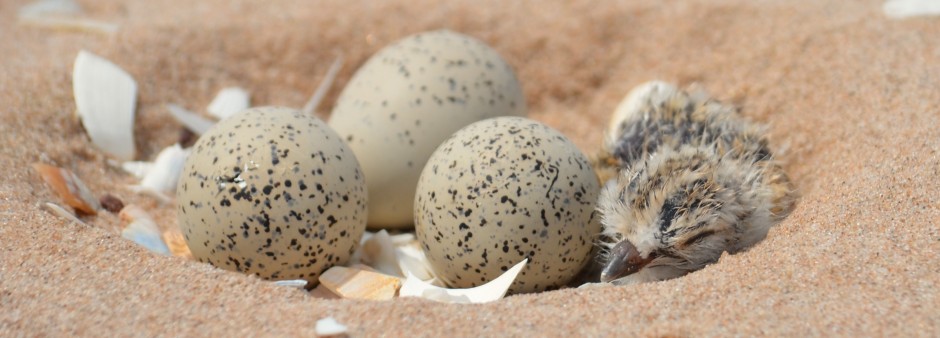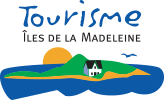


One of the most vulnerable residents of the Islands is without a doubt the piping plover, Charadrius melodus melodus. Small and discreet, this pale grey and white shorebird can be recognized by its orange legs and beak, and its black collar and headband. Its name comes from the characteristic alarm call you'll hear if you get too close for its liking—especially if it's guarding a nest or chicks. Currently, just over 25 pairs nest in Quebec, and all of them are on the Islands during the summer. Many dangers threaten them: predators, storms, and human-related risks...
Feet in the sand and binoculars to the eyes, we scan the beach from end to end in search of a tiny grey-white dot, an imperceptible movement that would betray a presence among the scattered rocks. Every time a piece of seaweed, a gust of foam carried by the wind, or even a fat horsefly crosses our field of vision, our bodies tense—we think we've found it—but no. Defeated, we lower our binoculars. No piping plover. We keep walking. Ahead of us, the beach stretches for kilometers until it's lost in the horizon. Our grip on the binoculars tightens—we must find something.

Sometimes a motley group, we are united by the desire—no, the need—to do something, that is, to do what we can to protect our Islands, to preserve its biodiversity. Almost no beach is spared: Sandy Hook, South Dune, West, North, Martinique, Étang des Caps, East Point... just to name a few. All must be walked in full. After hours of walking, my mind alternates between hallucinating that long-awaited whistle or drifting away, lulled by the constant song of wind and waves. Kilometer after kilometer, time seems to stop. The water level in my bottle, however, keeps dropping.
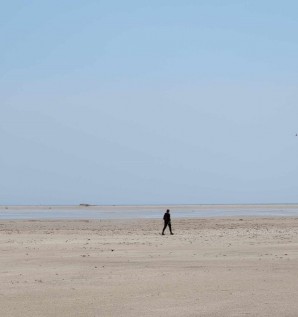
Suddenly, I spot a detail on the beach. I stop abruptly. Tiny tracks that I recognize—they are piping plover tracks.
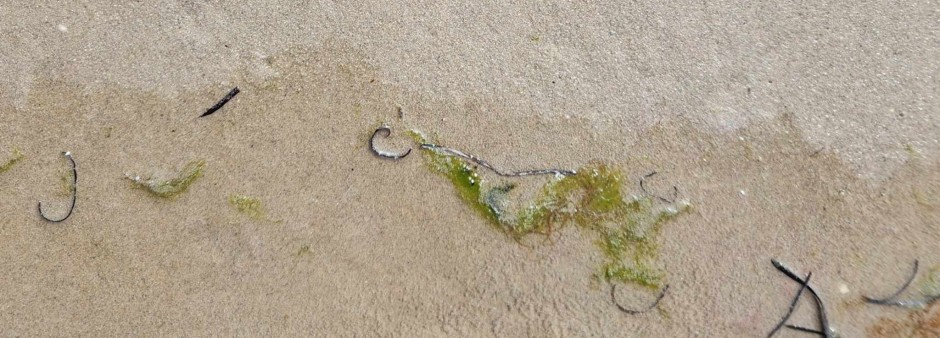
Hardly have I made this realization when I hear a sharp, high-pitched “peep!” I look up and glance at my colleagues: I didn't imagine this one. That's all it takes for us to grab our binoculars. A second call prompts me to adjust my scope. I first spot the black collar, standing out against the grey rocks. Proudly perched on its orange legs, an adult seems to challenge me. “Keep going if you dare,” it seems to suggest, its bravery contrasting with its tiny size. It whistles again. Before long, we spot a second adult, this one nestled on the ground.
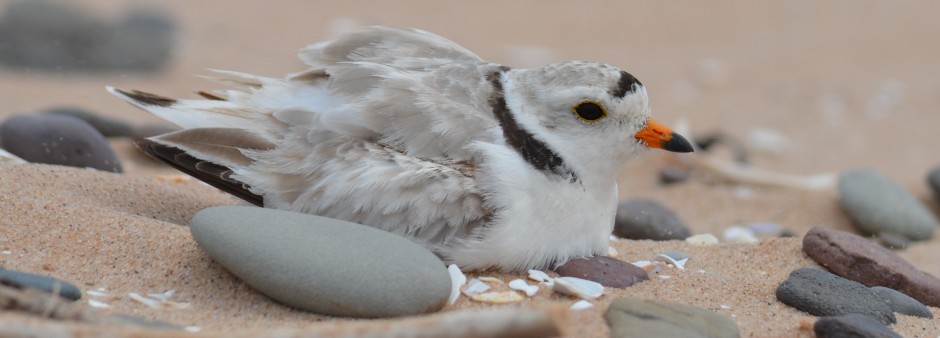
We officially have a pair! The second plover rises and reveals four tiny stones beneath its body. Except those small, sand-colored and speckled pebbles are in fact eggs—always four. Our surprise and joy quickly give way to worry: not far from the nesting pair, we spot ATV tracks. A safety perimeter will need to be built as soon as possible to avoid the nest being crushed. After recording our coordinates, we move on. My water level is still low, but my energy is through the roof. The work is worth it—we'll make it. The plovers will keep whistling for another summer.
